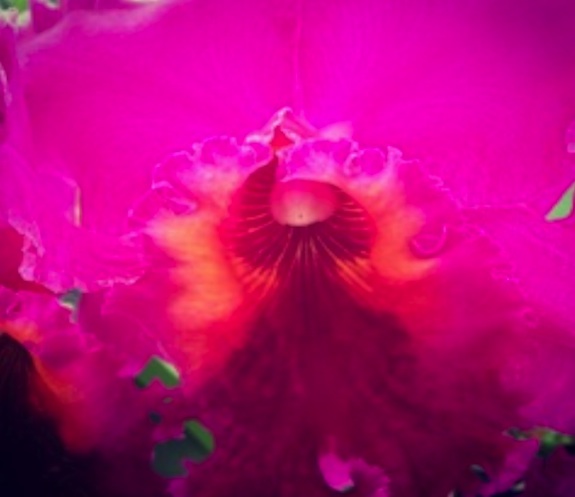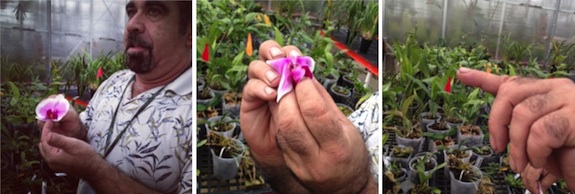To Grow an Orchid, It Takes a Village, … And Some Fungus
An orchid bloom, so delicate and elegant, arises out of a complex symbiotic relationship with, of all things, fungi. It’s a classic case of beauty and the beast, or gorgeous meets gross. But the fundamental relationship between the much-admired botanical family known as the Orchidaceae, which make up more than ten percent of the world’s […]

At the Smithsonian’s greenhouses, orchid expert Tom Mirenda tells tales about a few of the beauties growing there, including from left to right: Aliceara Pacific Nova—“A weird and twisted hybrid made from a combination of several orchid genera.” Brassidium Fangtastic Bob Henley—”Looks like it might bite you. But it is perfectly safe…unless you are a wasp. Brassias lure wasps to their blooms by mimicking the type of spider they parasitize. But this one is just faking ….and quite disappointing to the wasp who has to keep looking for a ‘real spider.’” Oncidiopsis Stefan Isler—”Orchid hybrids like this combine the best features of their parents. This one combines a very small red flowered plant with a larger and more floriferous yellow flowered orchid. Such is the hybridizer’s art.” Photos by Beth Py-Lieberman
An orchid bloom, so delicate and elegant, arises out of a complex symbiotic relationship with, of all things, fungi. It’s a classic case of beauty and the beast, or gorgeous meets gross. But the fundamental relationship between the much-admired botanical family known as the Orchidaceae, which make up more than ten percent of the world’s plants, and the little-understood fungi that live in the soils of a forest floor, is one of the more complex mysteries being studied by Smithsonian orchid ecologists. And as more and more orchid species disappear from North American forests, botanist Dennis Whigham of the Smithsonian Environmental Research Center in Edgewater, Maryland, says it’s another example of the canary in the coal mine, a warning that must be heeded. “When orchids are present,” Whigham says, “that means the ecosystem is in good shape.”
Recently, to help foster a better understand of the optimal conditions it takes for native wild orchids to survive, if not thrive, Whigham and his colleagues announced the formation of the North American Orchid Conservation Center, a public-private partnership that includes several regional botanical gardens as well as the U.S. Botanic Gardens. The plan is to establish a national seed bank for the 250 known species of North American orchids and to identify the genetic diversity of the fungi that are central to the life-cycle of each species and figure out how to propagate them. “There were just a few people working on conserving native orchids,” says Whigham, “but now we’ve created a national network.”

Of Rhyncholaeliocattleya Raye Holmes ‘Newberry,’ or just Cattleya Raye Holmes, Mirenda says: “This luscious beauty invites pollinators to visit her with the clear directional signals of the nectar guides in her lip.”

Left: Assorted Dendrobium hybrids: Mirenda says that fall is the best time of year to see these large hybrid dendrobiums in full bloom. The Psychopsis Butterfly at right, he says are “a real orchid mystery, these fantastic orchids resemble butterflies, undoubtedly to lure a pollinator, but in 200 years of cultivation, no one has ever observed its insect partner in action.”

Mirenda (above left) holds a Phalaenopsis flower, to describe what makes an orchid, an orchid. Orchid flowers, he says, “do some pretty awful manipulations to the animals that pollinate them….here one animal is getting even!” Finally, Mirenda mimics the hard exoskeleton of pollinating bee with his
fingernail.
/https://tf-cmsv2-smithsonianmag-media.s3.amazonaws.com/accounts/headshot/Beth_Head_Shot_High_Res-14-v2.png)
/https://tf-cmsv2-smithsonianmag-media.s3.amazonaws.com/accounts/headshot/Beth_Head_Shot_High_Res-14-v2.png)